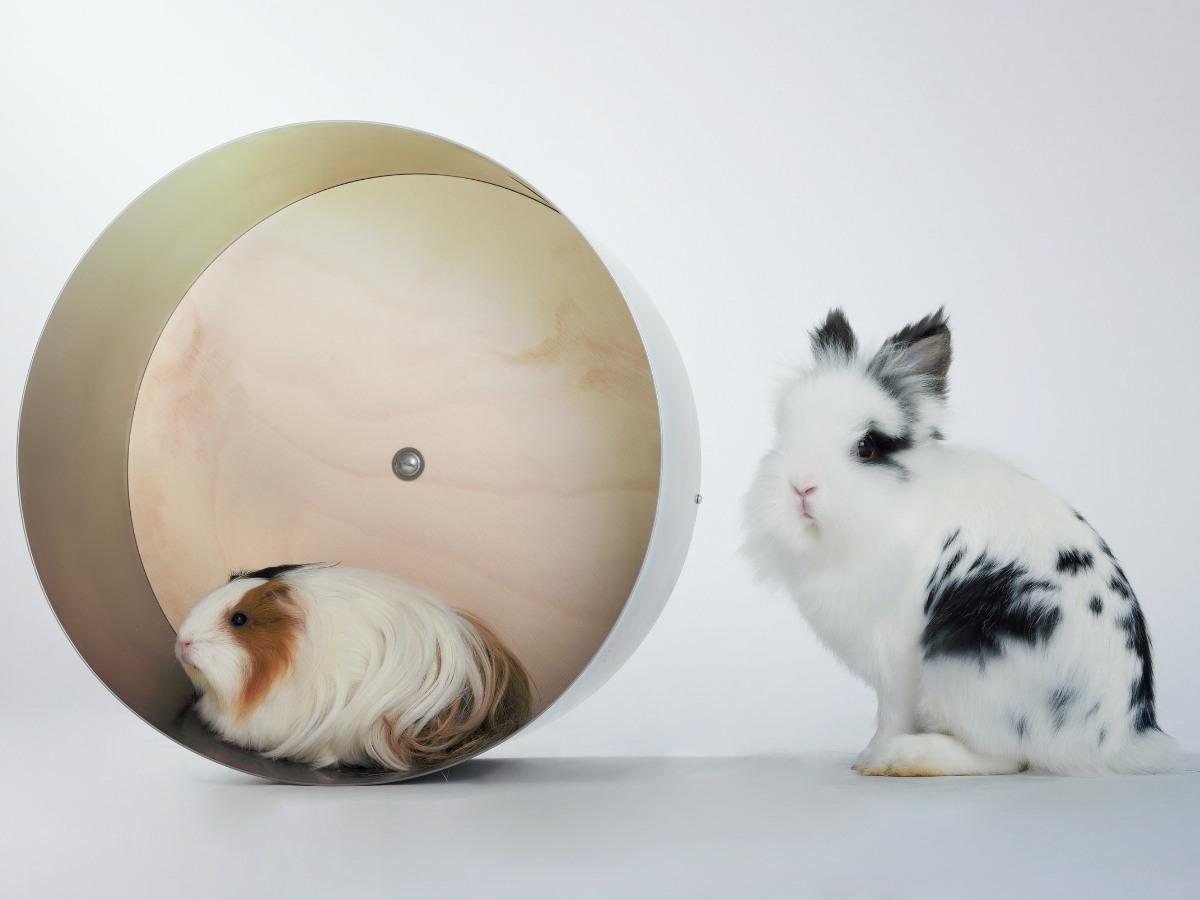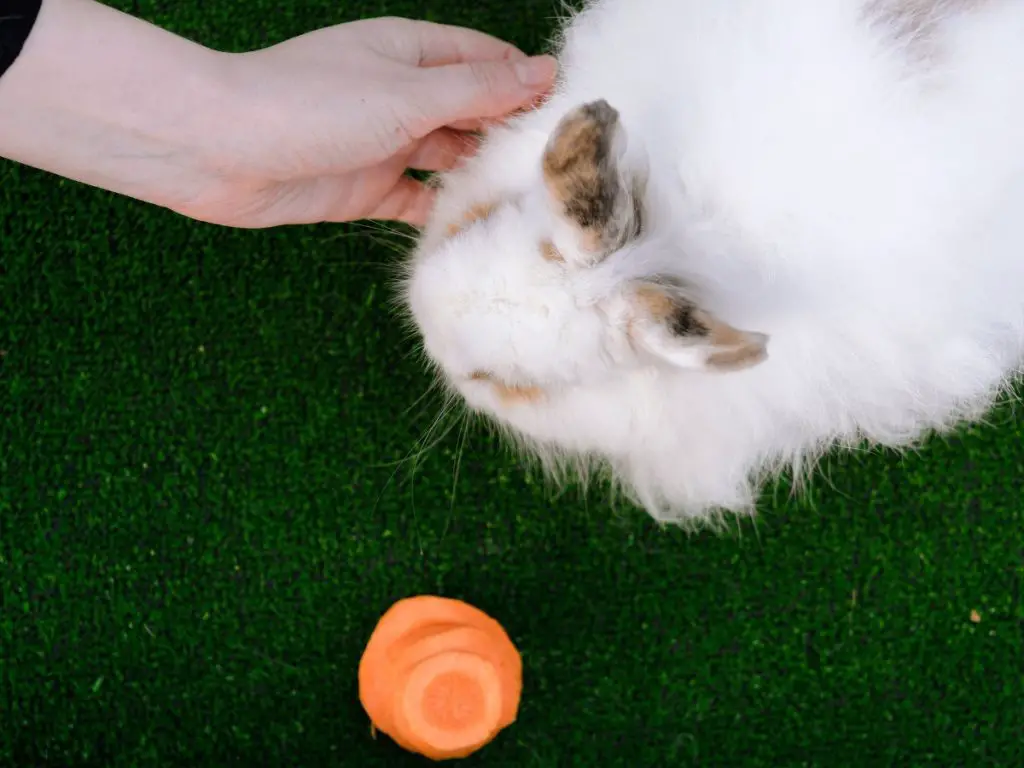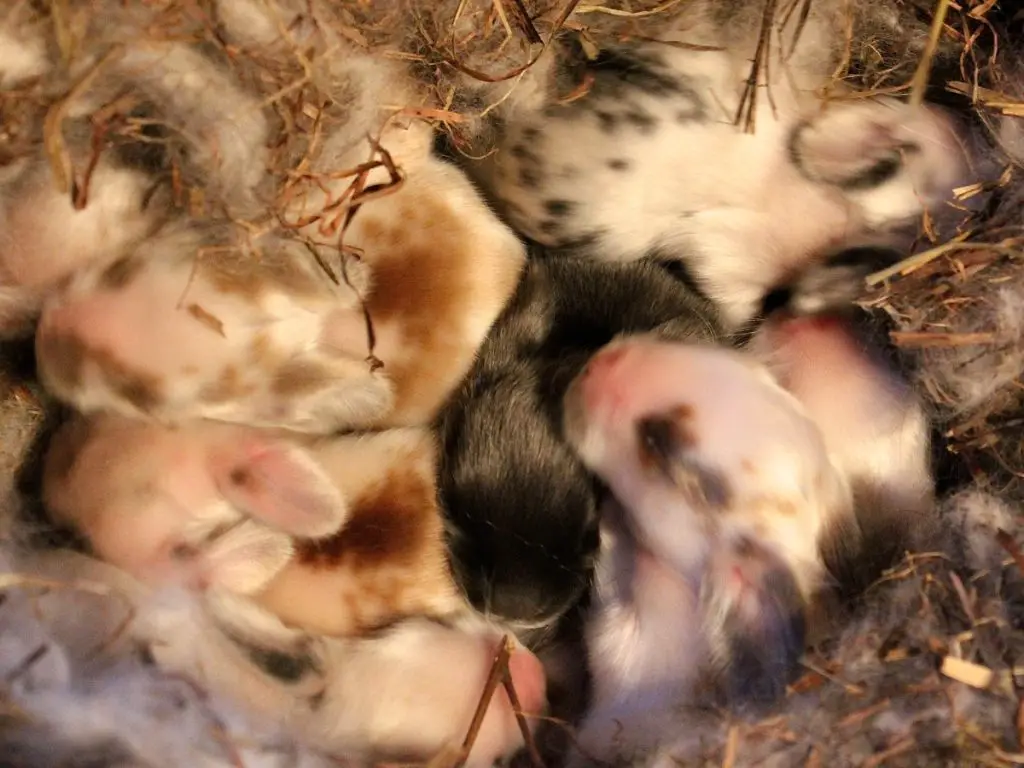The Dwarf Angora Rabbit breed is a charming and compact breed that has captured the hearts of many pet enthusiasts due to its long, soft wool coat and small size. This breed is not only beloved for its physical attributes but also for its friendly and docile nature, making it an ideal companion.
In this blog post guide, we delve into the nuances of the Dwarf Angora Rabbit, from understanding its characteristics to proper care, breeding practices, and how it stands out from other rabbit breeds.
Key Takeaways
- Dwarf Angora Rabbits are known for their luxurious wool and remain small compared to standard Angora breeds.
- They are gentle and have a docile temperament, which makes them popular as pets.
- Proper care includes meeting specific dietary needs, regular grooming to maintain their wool, and monitoring their health.
- Breeding Dwarf Angora Rabbits requires knowledge of genetics to maintain diversity and avoid common genetic issues.
- Dwarf Angoras offer a unique appeal due to their size and wool quality when compared to standard Angora and other dwarf breeds.
Understanding the Dwarf Angora Rabbit
Physical Characteristics
The Dwarf Angora Rabbit is a charming and distinctive breed, known for its luxurious wool and compact size. Their wool is dense and silky, providing an exquisite texture that is highly prized by rabbit enthusiasts and fiber artists alike. The breed exhibits a variety of colors, ranging from pure white to shades of grey, brown, and black.
Adult Dwarf Angoras typically weigh between 2 to 3.5 pounds, making them one of the smaller rabbit breeds. Their ears are short and upright, contributing to their endearing appearance. The dwarf gene in these rabbits results in their petite stature, which is a defining characteristic of the breed.
Below is a summary of the key physical traits of the Dwarf Angora Rabbit:
- Weight: 2 – 3.5 pounds
- Wool texture: Dense and silky
- Color variety: White, grey, brown, black
- Ear type: Short and upright
Breed History and Origins
The Dwarf Angora rabbit, with its distinctive long, soft wool, is a breed with a rich history. The Angora is said to have originated in Ankara, historically known as Angora, in present-day Turkey. It is known for its luxurious fiber, which has been coveted for centuries.
The breed’s journey to Western Europe is a testament to its enduring appeal. Brought to France in 1723, the Angora quickly became a favorite among French nobility. Over time, selective breeding led to the development of smaller versions, resulting in the Dwarf Angora we know today.
While the Dwarf Angora shares its origins with the larger Angora breeds, it is distinct in its petite size and specific care requirements. Its popularity continues to grow among rabbit enthusiasts and fiber artists alike.
Behavior and Temperament
Dwarf Angora rabbits are known for their gentle personalities and affectionate nature, making them excellent companions. They are intelligent creatures, capable of forming strong bonds with their owners and responding to their names. These rabbits are also quite playful, enjoying interactive activities that stimulate their curiosity.
While they are generally good-natured, Dwarf Angoras have their own set of quirks. They require a calm environment and can become stressed by loud noises or sudden movements. It’s important for potential owners to understand that patience and gentle handling are key to nurturing a positive relationship with these sensitive animals.
Here are some pros and cons of owning a Dwarf Angora rabbit:
- Pro: They are social animals that thrive on interaction.
- Con: They can be high-maintenance due to their grooming needs.
- Pro: Dwarf Angoras are suitable for families with children.
- Con: They may require more attention and care than other breeds.
Caring for Your Dwarf Angora Rabbit
Dietary Requirements For Dwarf Angora Rabbit Breed
Proper nutrition is essential for the health and well-being of Dwarf Angora rabbits. Pelleted commercial feeds are designed to meet their complete nutritional needs at the time of manufacture.
However, it’s important to note that vitamins, such as Vitamin A and Vitamin E, can degrade over time, especially with poor or prolonged storage. These vitamins are crucial for the rabbits’ breeding capabilities.
To supplement these vitamins, consider adding a tablespoon of black oil sunflower seeds to their diet for Vitamin E, and a generous serving of dark leafy greens like dandelions, plantain, raspberry, and kale for Vitamin A. While vegetables offer additional nutrients, they should be given in moderation to avoid digestive issues.
Here is a simple guide to the dietary components for Dwarf Angora rabbits:
- Hay: A constant supply for necessary fiber and protein.
- Pellets: Commercial feeds tailored to rabbits’ nutritional needs.
- Vegetables: Dark leafy greens for vitamins; serve in moderation.
- Seeds: Black oil sunflower seeds as a source of Vitamin E.
Always ensure that your Dwarf Angora rabbit maintains a healthy weight, as this is vital for their overall health. For a more comprehensive guide on feeding your rabbit, consult resources dedicated to rabbit nutrition.
Grooming Needs For Your Dwarf Angora Rabbit Breed
Grooming a Dwarf Angora rabbit is essential not only for maintaining their beautiful appearance but also for their health. Regular grooming sessions are crucial to prevent mats and tangles in their dense fur.
It’s recommended to groom your rabbit at least twice a month, though a weekly routine is ideal. This helps to avoid serious conditions such as wool block, where ingested fur can lead to digestive issues.
When grooming, use a wide-toothed comb or a slicker brush designed for Angoras. Start by gently working through the fur from the bottom layers upwards, being careful not to pull or stress the skin. Trimming their nails regularly is also important to prevent overgrowth and injury.
Here’s a basic grooming checklist for your Dwarf Angora Rabbit:
- Wide-toothed comb or slicker brush
- Nail clippers
- Mild rabbit-safe shampoo (for occasional baths)
- Ear cleaning solution
- Soft cloth for cleaning around the eyes
Remember, grooming is not just a chore; it’s a bonding experience with your pet. Take this time to check for any signs of health issues such as lumps, bumps, or skin irritations.
Health Considerations For Dwarf Angora Rabbit Breed
Dwarf Angora rabbits are generally robust and can enjoy a healthy life with proper care. Most Dwarf Angora rabbits are relatively healthy, especially when kept indoors and fed a high-quality diet. However, like all breeds, they are susceptible to certain health issues that owners should be aware of.
Common health concerns for Dwarf Angoras include dental disorders due to their continuously growing teeth, digestive issues such as constipation or diarrhea, and respiratory conditions like asthma. It’s crucial for owners to monitor their rabbits for signs of illness and seek veterinary care promptly.
Here is a list of potential health issues to be vigilant about:
- Dental Disorders
- Digestive Issues (Constipation, Diarrhea)
- Respiratory Conditions (Asthma, Bronchitis)
- Eye Infections
- Skin Conditions (Allergies, Parasites)
Regular check-ups with a veterinarian experienced in rabbit care can help detect and treat these conditions early, ensuring your Dwarf Angora rabbit leads a comfortable and happy life.
Breeding and Genetics
Breeding Practices
Breeding Dwarf Angora rabbits requires a thoughtful approach to maintain the health and quality of the breed. To manage inbreeding, keep detailed records of each rabbit’s lineage and avoid breeding closely related individuals.
Introducing new breeding stock from other reputable breeders can help diversify genetics. Some breeders utilize software or apps specifically designed for animal breeding to track genetics and plan matings.
Before beginning a breeding program, selecting the right parent stock is crucial. It’s recommended to have a larger female to a smaller male to ensure the offspring are not too large for the female to birth. This practice is essential for the well-being of both the mother and the kits.
Here are some reasons why rabbits may not breed successfully:
- They’re Too Fat or Thin
- It’s Too Hot or Cold
- There Isn’t Enough Light
Always consult with experienced breeders or veterinarians for advice on creating a responsible and effective breeding schedule.
Genetic Diversity Dwarf Angora Rabbit Breed
Maintaining genetic diversity within a Dwarf Angora rabbitry is crucial for the health and vitality of the breed. Breeding strategies should prioritize genetic variation to prevent the negative effects of inbreeding, such as reduced fertility and increased susceptibility to disease.
To achieve this, breeders often keep detailed records of each rabbit’s lineage and avoid mating individuals that are closely related.
Introducing new breeding stock from other reputable breeders is a common practice to enhance genetic diversity. This can be complemented by using breeding software or apps that assist in planning matings with optimal genetic outcomes. For instance, a large female to small male ratio is recommended to ensure the offspring are not too large for the female to birth, which aligns with best practices in animal breeding.
Here is a simple list of steps to manage genetic diversity in a Dwarf Angora rabbitry:
- Keep detailed lineage records for each rabbit.
- Avoid breeding closely related individuals.
- Introduce new breeding stock from reputable sources.
- Utilize breeding software to plan matings.
- Maintain a large female to small male ratio for breeding.
Common Genetic Issues in Dwarf Angora Rabbit Breed
Dwarf Angora rabbits, like all breeds, are susceptible to certain genetic health issues. Brachycephalic syndrome is one such condition, characterized by a craniofacial deformity that is not related to the dwarf genes.
This condition can lead to breathing difficulties and requires careful management. It’s important to note that craniofacial disease in rabbits can also be caused by factors unrelated to genetics, such as inappropriate nutrition or trauma.
Common genetic issues in Dwarf Angora rabbits include dental disorders, which are prevalent due to their shortened jaw structure. Other hereditary conditions to be aware of are degenerative disorders and various types of cysts. A comprehensive list of potential health concerns for Dwarf Angoras is as follows:
- Dental Disorders
- Degenerative Disorders
- Cysts
- Eye Infections
- Ear Infections
Owners should work closely with a veterinarian to monitor for these conditions and ensure their pets receive appropriate treatment when necessary.
The Dwarf Angora in Comparison
Dwarf vs. Standard Angora Rabbits
When comparing the Dwarf Angora rabbit to its standard-sized counterparts, size is the most noticeable difference. The Dwarf Angora is significantly smaller, with the official standard being less than 2.5 pounds. In contrast, standard Angora breeds such as the German and English varieties can weigh between 7.5 and 10.5 pounds respectively.
The smaller size of the Dwarf Angora is a result of selective breeding, particularly with the influence of the Netherland Dwarf breed.
This breeding has not only reduced the size but also maintained the breed’s characteristic long, soft wool coat. Despite their size difference, both Dwarf and standard Angoras share a gentle and docile temperament, making them well-suited as pets.
Here is a quick comparison of the Dwarf and standard Angora rabbits:
| Trait | Dwarf Angora | Standard Angora |
|---|---|---|
| Weight | < 2.5 lbs | 7.5 – 10.5 lbs |
| Coat | Long, soft wool | Long, soft wool |
| Temperament | Gentle, docile | Gentle, docile |
Comparison with Other Dwarf Breeds
When comparing the Dwarf Angora to other dwarf rabbit breeds, such as the Netherland Dwarf, distinct differences become apparent. Dwarf Angoras are renowned for their wool, which requires more grooming than the short-coated Netherland Dwarf.
The Dwarf Angora’s temperament is often described as more docile, making them a preferred choice for those seeking a calm companion.
In terms of size, Dwarf Angoras are slightly larger on average than Netherland Dwarfs. Below is a comparison of the average sizes:
| Breed | Average Weight |
|---|---|
| Dwarf Angora | 2.0 – 3.5 lbs |
| Netherland Dwarf | 1.5 – 2.5 lbs |
Popularity also varies between breeds. While Netherland Dwarfs are widely sought after for their compact size and variety of colors, Dwarf Angoras attract enthusiasts who appreciate the unique quality of their wool and gentle nature.
Each breed has its own dedicated following, but the Dwarf Angora’s luxurious coat and sweet disposition give it a special place in the hearts of rabbit lovers.
The Unique Appeal of Dwarf Angoras
The Dwarf Angora rabbit captivates enthusiasts and pet owners alike with its unique blend of charm and practicality. Their compact size and friendly disposition make them ideal for small living spaces and for those seeking a sociable pet with a touch of luxury.
Despite their diminutive stature, Dwarf Angoras boast a wool coat that rivals their larger counterparts in quality and texture. This makes them not only a delight to handle and cuddle but also a source of fine angora wool for fiber arts. Their care requirements, while specific, are manageable and rewarding.
- Charm: Engaging personalities and endearing looks.
- Practicality: Suitable for apartment living and smaller homes.
- Luxury: High-quality wool production on a smaller scale.
- Manageability: Easier handling due to their smaller size.
The Dwarf Angora’s appeal extends beyond its physical attributes to the joy and companionship it brings to its owners. Their presence is a daily reminder of the beauty and serenity that can be found in the smallest of creatures.
Conclusion – Dwarf Angora Rabbit Breed
In conclusion, the Dwarf Angora Rabbit breed presents a delightful combination of petite size and luxurious wool, making them a cherished choice for pet lovers. Their gentle temperament and the variety of colors and patterns they come in add to their appeal.
Whether you are a spinner, a felter, or simply seeking a companionable and elegant pet, the Dwarf Angora Rabbit is an excellent choice. As with any pet, they require proper care, including grooming and socialization, to maintain their well-being.
If you’re considering adding one of these adorable rabbits to your family, remember to research thoroughly to ensure you can provide the care they deserve. With the right attention and love, a Dwarf Angora Rabbit can be a wonderful addition to your home.
FAQs:
What is a Dwarf Angora Rabbit?
The dwarf angora rabbit is a small domestic rabbit breed known for its long, soft wool coat. It has been selectively bred to maintain a small size while retaining the luxurious fleece characteristic of angora rabbits.
How big do Dwarf Angora Rabbits get?
Dwarf Angora Rabbits are bred to be small in stature. While the exact size can vary, they are significantly smaller than the standard-sized angora rabbit breeds.
What are the grooming needs of a Dwarf Angora Rabbit?
Dwarf Angora Rabbits require regular grooming due to their long wool coat. This includes frequent brushing to prevent matting and tangling, as well as occasional trimming to keep the coat manageable.
What should I feed my Dwarf Angora Rabbit?
A Dwarf Angora Rabbit’s diet should consist of high-quality hay, fresh vegetables, a small amount of pellets, and clean water. Occasional treats can be given, but it’s important to ensure a balanced diet.
Are Dwarf Angora Rabbits good pets for families?
Yes, Dwarf Angora Rabbits are known for their gentle and docile nature, making them suitable pets for families. However, due to their grooming needs, they require dedicated care.
Can Dwarf Angora Rabbits live with other pets?
Dwarf Angora Rabbits can coexist with other pets if introduced properly and supervised to ensure safety. It’s important to consider the temperament of all animals involved.





